
- •V.S. Sobolev institute of geology and mineralogy
- •A.A. Trofimuk institute of petroleum geology and geophysics (ippg sb ras) novosibirsk state university (nsu)
- •Isbn1564
- •Isbn 978-5-98180-946-0
- •Contents
- •Geology
- •Experimental mineralogy and crystal growth Growth, morphology and optical properties of γ-BiB3o6 single crystals
- •1V.S. Sobolev Institute of Geology and Mineralogy sb ras; 2Novosibirsk State University, Novosibirsk, Russia
- •Mineral inclusions in the granulated quartz of deposits Southern Ural
- •Igumentseva m.A.
- •Institute of mineralogy UrB ras; South-Ural State University, Miass, Russia
- •Structure of silicate melts depending on modifier cation and temperature: experimental study
- •Institute of mineralogy UrB ras, Miass, Russia
- •V.S. Sobolev Institute of Geology and Mineralogy sb ras, Novosibirsk, Russia
- •Crystallization processes in zeolitic rock mixed with NaOh
- •1Novosibirsk State University; 2 V.S. Sobolev Institute of Geology and Mineralogy sb ras, Novosibirsk, Russia
- •Micro-ftir study of quartz crystals from Zhelannoye deposit, Subpolar Urals
- •1 Institute of mineralogy UrB ras; 2 South-Ural State University, Miass, Russia
- •2. Kronenberg a.K. (1994) Hydrogen speciation and chemical weakening of quartz. Rev. Miner. 29 123-176.
- •V.S. Sobolev Institute of Geology and Mineralogy sb ras, Novosibirsk, Russia
- •Experimental study of silver-palladium sellenides
- •Vymazalová a.1, Chareev d.A.2, Kristavchuk a.V.2, Laufek f., Drábek m., Voronin m.V.2 Osadchi e.G.2
- •1Czech Geological Survey, Prague, Czech Republic, 2Institute of Experimental Mineralogy ras, Chernogolovka, Russia
- •Experimental studies of the argon behavior in the biotite structure at high temperatures and pressures: first results
- •V.S. Sobolev Institute of Geology and Mineralogy sb ras, Novosibirsk, Russia
- •Without heating, 40 kbar, (4-27-11);
- •Mineralogy
- •1Institute of Crystallography ras, Moscow, Russia
- •2Institute of Problems of Chemical Physics ras, Chernogolovka, Russia
- •Kyanite eclogite xenolith from Udachnaya pipe: whether there was coesite in the rock
- •V.S. Sobolev Institute of Geology and Mineralogy sb ras, Novosibirsk, Russia
- •Mineral inclusions of iron ores of the Bakchar deposit (Western Siberia)
- •Redistribution of petrogenic elements under speleolithogenesis in Okhotnichiya cave (Baikal region, Irkutsk oblast)
- •1 Institute of the Earth Crust sb ras; 2 Institute of Geochemistry sb ras, Irkutsk, Russia
- •Gold-bearing ore mineral association of Piilola occurrence (Kuhmo greenstone belt, eastern Finland)
- •Institute of Mineralogy ub ras, Miass, Russia
- •V.S. Sobolev Institute of Geology and Mineralogy sb ras, Novosibirsk, Russia
- •Clay minerals of the Rubtsovsk deposit
- •Oxide mineral inclusions in pyropes from the Internationalnaya kimberlite pipe, Yakutia
- •V.S. Sobolev Institute of Geology and Mineralogy, Novosibirsk, Russia
- •Mineralogical composition of peridotites from V. Grib kimberlite pipe (Arkhangelsk region, Russia)
- •1 V.S. Sobolev Institute of Geology and Mineralogy sb ras, Novosibirsk, Russia; 2 Arkhangelskgeoldobycha Ltd, Arkhangelsk, Russia
- •Spinel composition in pillow lavas from Mesozoic ophiolites of Nain and Ashin (Central East Iranian microplate)
- •1 Department of Geology, Faculty of science, University of Isfahan, Isfahan, Iran; 2 Department of Geology, Science and Research Branch, Islamic Azad University, Tehran, Iran
- •Zonal and sectorial diamonds from some of Yakutian kimberlite pipes
- •V.S. Sobolev Institute of Geology and Mineralogy sb ras, Novosibirsk, Russia
- •Defect-impurity composition of diamonds from the Carnic deposits from North-east of Siberian plate
- •451059@Mail.Ru
- •Native gold from alluvial deposits in the mid-Amga river (Eastern Siberian platform)
- •Igneous petrology and mineralogy Sulfur-enriched apatite and magmatic anhydrite in the epidote-bearing subvolcanic rocks, the Middle Urals, Russia
- •Institute of Geology and Geochemistry, Yekaterinburg, Russia
- •Iavdonina@gmail.Com
- •High-potassium rocks of Sayan complex of South-Eastern part of Main Sayan Fault zone (interfluvial of Irkut and Kitoy rivers)
- •Institute of the Earth Crust sb ras, Irkutsk, Russia
- •Estimation of oxygen fugacity according to amphibole chemical composition in Vash granitoid, nw Natanz (Esfahan, Iran)
- •Chemical variations of chromium spinel in Medeksky, Medvezhiy Log, Malaya Shita and Tartay differentiated ultrabasic bodies, Eastern Sayan Mountains
- •Geochemical heterogeneity of ophiolites from the Severnaya, Zelenaya and Barkhatnaya mountains (Kuznetsky Alatau)
- •Amphibole chemistry of quartzdiorites from Boroujerd granitoid complex (Western Iran)
- •Petrology and geochemistry of the Alut granitoid complex, Sanandaj-Sirjan Zone, nw Iran
- •Chelyabinsky granitoid pluton: the formation phases and the source of magmageneration (South Urals, Russia)
- •Geochemical and petrological characteristics of volcanic rocks of Bayangol accretionary prism, Northern Mongolia
- •New data about age of granitoids of Kalba-Narym polychronal batholith
- •V.S. Sobolev Institute of Geology and Mineralogy sb ras, Novosibirsk, Russia
- •Material composition of the Late Permian granite-rhyolitic formation of islands of Peter the Great bay (Sea of Japan)
- •V.I. Il’ichev Pacific Oceanological Institute feb ran, Vladivostok, Russia
- •Petrogenesis of island-arc volcanic rocks from the Char suture-shear zone (East Kazakhstan)
- •V.S. Sobolev Institute of Geology and Mineralogy sb ras, Novosibirsk, Russia
- •Serpentinised peridotites from Sikhoran mafic-ultramafic complex (Southern Iran): Petrological and geochemical constraints on serpentinization processes and tectonic setting
- •Islamic Azad University Ahar Branch, Iran
- •The first discovery of combeite and pectolite in kamafugitic rocks of Central Italy
- •V.S. Sobolev Institute of Geology and Mineralogy sb ras, Novosibirsk, Russia
- •Silicate-carbonate inclusions in clinopyroxenes of shonkinites, Inagli massif (Aldan Shield, Russia)
- •1Novosibirsk State University, Novosibirsk, Russia, 2v.S. Sobolev Institute of Geology and Mineralogy sb ras, Novosibirsk, Russia
- •Occurrence of I-type granitoid in the Paleo-Tethys ophiolite and associated metaflysch (Mashhad, ne Iran)
- •1Department of Geology, Science and Research Branch, Islamic Azad University, Tehran, Iran; 2Department of Geology, Faculty of Science, University of Isfahan, Isfahan, Iran
- •Some geochemical and petrological aspect of Eocene arc-magmatism along the eastern margin of Central Iran
- •1School of Geology, College of Science, University of Tehran, Iran; 2Department of Geology, University of Payam-e- noor, Esfahan, Iran
- •Adakitic signature of quartz monzonitic porphyry stock and related cross-cutting dikes at Kighal, nw Iran
- •Composition and crystallization conditions of rare-metal dyke rocks in Eastern Kazakhstan
- •Geochemistry of wr and minerals of deformed peridotites from Udachnaya-East kimberlite pipe
- •V.S. Sobolev Institute of Geology and Mineralogy sb ras, Novosibirsk, Russia
- •Geochemical characteristics and formation conditions of bimodal series volcanics of Dzabkhan microcontinent
- •V.S. Sobolev Institute of Geology and Mineralogy sb ras, Novosibirsk, Russia
- •Mineralogy and Geochemistry of the Bitu-Dzhida multiphase intruded massif of Li-f rare-metal granites (Northern Mongolia)
- •1A.P. Vinogradov Institute of Geochemistry sb ras, Irkutsk, Russia; 2Institute of Geology sb ras, Ulan-Ude, Russia
- •Metamorphic petrology and mineralogy
- •Institute of Precambrian Geology and Geochronology ras, Saint-Petersburg, Russia
- •Geochemical diversity of metabasite pods from the Neoarchean Baidaragin grey gneiss complex, Central Mongolia
- •First discovery of MgTi-rich dumortierite in association with quartz, kyanite and corundum (Belomorian eclogite province)
- •1 Geological Institute ras, Moscow, Russia; 2 Institute of Experimental Mineralogy ras, Chernogolovka, Russia
- •Mineralogy of the combustion metamorphic rocks from the Dashgil mud volcano, Azerbaijan
- •1 V.S. Sobolev Institute of Geology and Mineralogy sb ras, Novosibirsk, Russia, 2 Geology Institute of Azerbaijan National Academy of Sciences, Baku, Azerbaijan
- •Identification of the primary nature of granulite complexes with the use of geochemical tendencies of sedimentary and igneous differentiation
- •40Ar/39Ar isotopic age of Svyatoy Nos Peninsula (Transbaikalia) granulites and problem of its geodynamic interpretation
- •1Novosibirsk State University, Russia; 2 V.S. Sobolev Institute of Geology and Mineralogy sb ras, Novosibirsk, Russia; 3 Geological Institute sb ras, Ulan-Ude, Russia
- •Investigation of polyphase and fluid inclusions in clinopyroxene from diamond-grade calc-silicate rocks of Kokchetav Massif (Northern Kazakhstan)
- •V.S. Sobolev Institute of Geology and Mineralogy sb ras, Novosibirsk, Russia
- •Crustal and mantle-derived peridotites from hp-uhp collision belts: mineral composition and geochemical differences
- •V.S. Sobolev Institute of Geology and Mineralogy sb ras, Novosibirsk, Russia
- •The main features of composition, structure and origin of garnet pyroxenites and eclogites of Anrakhai metamorphic complex in Southern Kazakhstan
- •V.S. Sobolev Institute of Geology and Mineralogy sb ras, Novosibirsk, Russia
- •Polymetamorphism of Precambrian rocks of the north of Urals
- •Institute of Geology Komi sc ub ras, Syktyvkar, Russia
- •Mineral and ore deposits Skarn-type Fe-Cu mineralization at eastern contact zone of Kamtal monzonitic stock, nw Iran
- •1Geology Department, Islamic Azad University of Ahar, Iran; 2Research Institute for Fundamental Sciences, Tabriz University, Tabriz, Iran
- •Searches for diamond-bearing rocks which are not associated with kimberlites in the Nuratau mountains, Uzbekistan
- •Institute of Geology and Geophysics of Academy of Sciences of Republic of Uzbekistan, Uzbekistan
- •Comparison of the epithermal gold deposits in the Mesozoic tectonic and magmatic activation zones of Transbaikalia and North Caucasus (as example Baley and Radujnoe deposits)
- •The position of the antimony mineralization in the ore-forming process at the Suzdal gold deposit (Eastern Kazakhstan)
- •V.S. Sobolev Institute of Geology and Mineralogy sb ras, Novosibirsk, Russia
- •Anorogenic Ring Complex Clusters
- •Detailed survey Geological mapping of El Limon vein deposit, and its relationship with the otu fault shear zone, Zaragoza - Antioquia, Colombia
- •The unusual Las Cruces copper mineralization: is the enrichment an actual supergene system?
- •1Instituto Geológico y Minero de España, Madrid, Spain; 2Universidad del País Vasco, Bilbao, Spain; 3 Cobre Las Cruces s.A., Gerena, Sevilla, Spain
- •Mineralogical, petrological and fluid inclusion study of the Brehov ore deposit (Eastern Slovakia)
- •1Department of Mineralogy, Eötvös Loránd University, Budapest, Hungary
- •2Štátny geologický ústav d. Štúra, Werferova, Košice
- •Oxide and sulfide ore formation sequence modeling with reference to ore deposits of the Udokan-Chiney ore district
- •Stable isotope and fluid inclusion evidence for the origin of Sorkhe Dizaj iron oxide-apatite deposit, nw Iran
- •The method of forecasting and search Gold deposits of East Kazakhstan
- •Lithostructural controls on gold in the Oumé-Fettékro greenstone belt, Côte d’Ivoire
- •On the formation assignment of the Lugokan deposit (Eastern Transbaikalia)
- •V.S. Sobolev Institute of Geology and Mineralogy sb ras, Novosibirsk, Russia
- •Typomorfic features of gold on the Enganepe Ridge (Polar Urals)
- •Tectonics and geodynamics Structural and microstructural investigation of Hoz Valley shear zone: with emphasis on preferred orientation of quartz c-axis Fabric, nw Zagros (Iran)
- •1Islamic Azad University, Aligudarz branch, Aligudarz, Iran; 2Department of Earth Science, Science and Research Branch, Islamic Azad University, Fars, Iran.
- •Active Horsetail Splay Structure in the Cenozoic Magmatic arc of Iran
- •Heat Flow and Geodynamics of the Kaapvaal Craton and its implications on the potential of Enhanced Geothermal Energy in South Africa
- •Evolution of Zamiin-Uud – Hegenshan accretion-collisional zone in Middle Devonian – Early Carboniferous: accreted model of South Gobi microcontinent to active margin of Sibirian continent, se Mongolia
- •Mechanical stratigraphy of the Cretaceous limestone in Isfahan region, Iran
- •Department of Geology, Faculty of Science, University of Isfahan, Isfahan, Iran
- •The tectonic control on Cretaceous sedimentary basin in Isfahan region, Iran
- •Navab anticline: a contractional structure in the transpressive bend of Qom-Zefreh fault zone, west of central Iran
- •Geochronology and Geochemistry of the Lakhna dykes swarm of the eastern Bastar Craton, Central India and its Implication on tectonics setting
- •1Department of Earth Sciences, Indian Institute of Technology Bombay; 2Principal Consultant, srk Consulting (Australasia) Pty Ltd., Australia.
- •Mesozoic-Cenosoic North Kazakhstan tectonic activation, evidence by apatite fission track analyses
- •V.S. Sobolev Institute of Geology and Mineralogy sb ras, Novosibirsk, Russia
- •Plate-Tectonic Setting of Ab-e-Haji Sandstones, Tabas Block, Central Iran
- •1Corporation of Engineering, Zamin Rizkavan, Tehran, Iran; 2Shahid Beheshti University, Tehran, Iran
- •Complexity and Changing Pattern of Tectonics in Hydrocarbon Bearing Basin of South East Asia
- •Tectonic patterns of the Yenisey Ridge: a review and kinematic data from major faults
- •Enigma of microcontinent formation
- •1University of Bergen, Norway; 2University of Lausanne, Switzeland; 3University of Oslo, Norway
- •Geochronological evidence of the Early Archaean events in the ttg Ingozero block, Kola Peninsula
- •Giant slump complex structure in Gulf of Guinea according 3d seismic
- •Introduction
- •Chah-e Deev: a model of sinkholes development in center of Iranian Plateau
- •1Zamin Pajuhan Kuhestan Geological Institute, Isfahan, Iran; 2Department of Geology, Faculty of Science, University of Isfahan, Isfahan, Iran; 3Islamic Azad University, Dolatabad Branch, Isfahan, Iran
- •Estimate earthquake risk to the Takht e Jamshid historical site (ne Shiraz, Fars, Iran)
- •Fluid inclusion planes as tectonic and ore formation indicators: an example the Antei uranium deposit (se Transbaikalia)
- •Tectonics, Deep-Seated Structure and Recent Geodynamics of the Caucasus
- •Geomorphology and quarternary geology Glacial landscape of Tigertysh mountain junction (south part of Kuznetsk Alatau mountains)
- •The influence of clay minerals on slope stability in landslide areas of the Polish Flysch Zone
- •Institute of Applied Geology, University of Natural Ressources and Life Sciences, Vienna, Austria
- •Age and causes of natural coal fires in the Kuznetsk coal basin
- •V.S. Sobolev Institute of Geology and Mineralogy sb ras, Novosibirsk, Russia
- •* Regional stratigraphic scheme of Pleistocene deposits in West Siberia after [8];
- •Geomorphologic structure of salty lakes region (The Ambarnaya Inlet, Varanger fjord, south-western part of the Barents Sea)
- •The age of buried soils of the sand dune near Kuehtanar stream (South-East of Gorny Altai)
- •V.S. Sobolev Institute of Geology and Mineralogy sb ras, Novosibirsk, Russia
- •Longitudinal profiles of the terraces in the middle Katun and Chuya valleys (Gorny Altai)
- •V.S. Sobolev Institute of Geology and Mineralogy sb ras, Novosibirsk, Russia
- •Grain-size record of the Late Pleistocene loess deposits in the south of West Siberia
- •V.S. Sobolev Institute of Geology and Mineralogy sb ras, Novosibirsk, Russia
- •Structure of the upper part of subaeral cover of Biya-Chumysh plateau
- •Vygranenko t.M.
- •Immortal_@list.Ru
- •Paleontology and stratigraphy
- •New method of investigation of bentic Foraminifera assembly across Paleocene - Eocene in north Schousf (Nehbandan), east of Iran
- •The graptolite Expansograptus hirundo zone in the Gorny Altai sections
- •Stratigraphy and Palaeoenvironment of the Paleocene/Eocene boundary
- •Interval in the Indus Basin, Pakistan
- •1National Centre of Excellence in Geology, University of Peshawar, Pakistan; 2 School of Geography, Earth and Environmental Sciences, Plymouth University, United Kingdom
- •Archaeocyatha: from synthetic works to knowledge base
- •Tabulate corals from Lower Silurian of the north-western Gorny Altai
- •A newly discovered Ediacaran biota containing Arkarua-like fossils from the Irkineeva Uplift, East Siberia
- •Coal Correlation and its Depositional Account: a Palynological Outlook
- •Lower Cambrian Small Shelly Fossils and biostratigraphy of the Northeastern Siberian Platform (Chekurovskaya anticline)
- •1 A.A. Trofimuk Institute of Petroleum Geology and Geophysics sb ras, Novosibirsk, Russia
- •2 Novosivirsk State University, Novosibirsk, Russia
- •Radiation of the middle Devonian conodonts in ne Salair (South of West Siberia)
- •1Novosibirsk State University, Novosibirsk, Russia
- •2A.A. Trofimuk Institute of Petroleum Geology and Geophysics sb ras, Novosibirsk, Russia
- •Izokhng@ipgg.Nsc.Ru
- •Stratigraphic hiatuses at the Frasnian/Famennian boundary in South Ural’s sections
- •Institute of Geology usc ras, Ufa, Russia
- •Evolution of sedimentary basins Geochemical heterogeneity of the Aptian-Cenomanian sediments of Western Siberia on the example of the Pokurskaya suite of the south Varieganskian bar
- •Comparison of sedimentation on passive continental margins versus island arcs (by the example of the Ulutau Formation in the South Urals)
- •Institute of Geology usc ras, Ufa, Russia
- •Eocene-Miocene Stratigraphy of Surma Trough: a Sequence Stratigraphic Approach
- •1Weatherford Products & Equipment Pte. Ltd., Singapore; 2Dept of Petroleum Geoscience, Universiti Brunei Darussalam, Brunei; 3Dept. Of Geology, University of Dhaka, Bangladesh
- •Geology, tectonics and evolution of Pasha-Ladoga and East-Anabar uraniferous basins
- •Features of chemical element distribution in pore waters and sapropel in the Dukhovoe Lake as reflection of the processes of freshwater diagenesis
- •V.S. Sobolev Institute of Geology and Mineralogy sb ras, Novosibirsk, Russia
- •Geochemical features of the Vendian-Cambrian carbonate deposits of Olenek uplift (Arctic, Russia)
- •V.S. Sobolev Institute of Geology and Mineralogy, sb ras, Novosibirsk, Russia
- •Source areas for neoproterozoic sediments of oseloc formation, Sayanian Birusa: geochemical and isotopic evidences
- •V.S. Sobolev Institute of Geology and Mineralogy sb ras, Novosibirsk, Russia
- •Vendian not synchronous carbonate sedimentation in Paleo-Asian Ocean
- •Vishnevskaya I.A.
- •V.S. Sobolev Institute of Geology and Mineralogy sb ras, Novosibirsk, Russia
- •Vishia@igm.Nsc.Ru
- •Environmental geosciences Predictive methods for assessment of the chemical composition of drainage from sulfide mine waste
- •Survey of Aeolian airborne dust over Iran from the point of view Geochemistry and Mineralogy (case study: Western Iran and North of Persian Gulf and Sea of Mokran)
- •Dynamics of the ecological state on protected areas of a mountain-climatic Sanatorium Chemal in Republic Altai
- •Vladimir.Roldugin@mail.Ru
- •Placement of different geochemical types of lakes in the Western Mongolia
- •Dependence of Vankor oilfield soils deformation characteristics on their physical properties
- •Scientific basis of engineering geocryological monitoring for gas pipeline "Bovanenkovo-Ukhta"
- •Investigation of influence "supergumusa" on migration nitrate in the profile of the aeration zone
- •1 Mirzo Ulugbek National University of Uzbekistan, Tashkent, Uzbekistan; 2 Institute of Hydrogeology and Engineering geology, Tashkent, Uzbekistan
- •Speciation of gold in peat polluted by acid main drainage of Ursk tailing pit (Ursk, Kemerovo region, Russia)
- •V.S. Sobolev Institute of Geology and Mineralogy sb ras, Novosibirsk, Russia
- •I_myagkaya@mail.Ru
- •Chemical composition of natural waters on the atomic power station building site (Tomsk region, Russia)
- •Institute of natural resources, Tomsk Polytechnic University, Tomsk, Russia
- •Influence of natural fulvic acid on solubility of sulfide ores (experimental investigation)
- •V.S. Sobolev Institute of Geology and Mineralogy sb ras, Novosibirsk, Russia
- •Stream water pollution by heavy metals around the Unalsky tailing pond
- •Institute of Geology of Ore Deposits, Petrography, Mineralogy and Geochemistry ras, Moscow, Russia
- •A simulation model of the stochastic lateral migration of the primary hydrocarbon
- •Hydrogeological envoronment in the agglomeration area of Irkutsk
- •Institute of the Earth crust, Irkutsk, Russia
- •Seismic hazard analysis by using a non-poissonian probabilistic approach
- •Geochemistry of uranium in organic sediments of small lakes in the Baikal region
- •Vosel Yu.S.
- •V.S. Sobolev Institute of Geology and Mineralogy sb ras, Novosibirsk, Russia
- •Vosel@yandex.Ru
- •The influence of coal-bearing series geodynamical zones on forming geoecological situation during mine abandonment
- •Geoinformation systems in the earth sciences Creation of Database of typomorphic-mineralogical properties of ti-zr placer minerals (db tmp tzpm)
- •Institute of Geology of Ore Deposits, Petrography, Mineralogy and Geochemistry ras, Moscow, Russia
- •The method of geoinformation-mapping morfokomplexes on a basis of the morphometric parameters and supervised classifications (for example, the typical areas of south-western Siberia)
- •V.S. Sobolev Institute of Geology and Mineralogy sb ras, Novosibirsk, Russia
- •Creation and information of a gis “Ground Movements” atlas in the Lot-and-Garonne region (France)
- •1University of Bordeaux 3 egid Institute, Pessac, France; 2 lrpc, Bordeaux, France
- •(On the base of geological and geobotanical investigations)
- •V.S. Sobolev Institute of Geology and Mineralogy sb ras, Novosibirsk, Russia
- •An analysis of snow cover changes in the Himalayan region using modis snow products and in-situ temperature data
- •Gis assessment of land use changes in some traditional Nigerian cities
- •1Department of Geographic Information System,Centre for Geodesy and Geodynamics,Toro Bauchi State. National Space Research and Development Agency
- •2Deapartment of Geography,Obafemi Awolowo University Ile-Ife, Nigeria
- •Structural-geomorphological zoning of Yakutian diamond province central part using gis
- •V.S. Sobolev Institute of Geology and Mineralogy sb ras, Novosibirsk, Russia
- •Petroleum geology
- •Reservoir modeling, geostatistics Proper Kv/Kh for reservoir simulation: use of core images
- •1Tomsk Polytechnic University, Tomsk, Russia; 2Freelancer, Novosibirsk, Russia
- •Sedimentary environments characterization of Yu2 horizon through a modern complex of well logs in central regions of West Siberia basin
- •Igor.Al.Karpov@gmail.Com
- •Hydrocarbon migration behaviour in Late Jurassic reservoirs of Kaymisovsk arch
- •Irina.Korneva@unicam.It
- •Risk and Probability in Resource Assessment as a Function of Uncertainty for Basin Analysis Exploration Model
- •Oil and gas geochemistry Hopanes in bitumen extracts of Mesozoic deposits of the Yenisei-Khatanga trough, Russia
- •1A.A. Trofimuk Institute of Petroleum Geology and Geophysics sb ras, Novosibirsk, Russia; 2 Novosibirsk State University, Novosibirsk, Russia
- •Neoproterozoic source rocks of the Cis-Patom Foredeep oil and gas sources in the south-eastern Siberian Platform
- •Biomarkers in organic matter of Jurassic deposits in the western part of the Yenisei-Khatanga regional trough, Russia
- •Gas Geochemical Evaluation of the Petroleum Potential of the Birofeld Graben of the Middle Amur Sedimentary Basin (Russian Far East)
- •V.I. Il’ichev Pacific Oceanological Institute feb ran, Vladivostok, Russia
- •Modern methods of hydrocarbon fuel prospects and exploration Methods of reservoir boundaries determination.
- •Seismic criteria for predicting reservoir quality and delineating complex traps in oxfordian sands of the West Siberian petroleum province
- •Introduction
- •Geomechanical model of rootless gas-filled structures genesis: a case study from Medvezh’e field
- •Ikozhemyakin@gmail.Com
- •Seismic stratigraphy, tectonic history and petroleum potential of the northern part of Kaymysovsky vault
- •Medyn-Saremboy Anticline zone Lochkovian reservoirs structure and petroleum potential
- •Complex of geophisical and geochemical methods for hydrocarbon prospects
- •Gashydrate areas, gas discharge and methane flows in the Okhotsk Sea
- •V.I. Il’ichev Pacific Oceanological Institute feb ras, Vladivostok, Russia
- •Porosity estimating of Parfenovo horizon of the Angara-Lensk step central part: complex interpretation of seismic, well-log, and petrophysics
- •Introduction
- •Structural characteristic and tectonic evolution analysis of West Siberian basin northern areas in the Mesozoic and the Cenozoic (by results of regional seismic profiles 27 and 32 interpretation)
- •Gas hydrates of the Okhotsk Sea is an impermeable layer for underlying oil and gas deposits
- •V.I. Il’ichev Pacific Oceanological Institute feb ras, Vladivostok, Russia
- •Introduction
- •Economic estimation and petroleum exploration and development Potentially productive zones of lower Jurassic deposits of Surgut and Nizhnevartovsk highs
- •Development of fall of testing
- •Pressure distribution in a layer at inflow of gas taking into account change of factor of compressibility of gas
- •Influence of the Linear Filtration Law Breach on the Gas-Liquid Mixtures Influx Into the Well
- •Geophysics
- •Well-logging Lateral Log signals in deviated and horizontal wells (based on numerical modeling data)
- •Decomposition of acquisition curves of isothermal remanent magnetization
- •Numerical modeling of em logging signals in sand-shale reservoir using clay distribution models for study of low-resistivity oil reservoirs
- •Ivanov y.S. Glinskikh V.N.
- •IvanovYs@ipgg.Nsc.Ru
- •Corrections of High Frequency Induction Isoparametric Wireline Logging Tool (vikiz) data in high deviated wells filled with conductive muds
- •Lithofacial interpretation of well-logging data in the interval of terrigenous deposits of the j2 horizon
- •Fluid dynamics in collectors by using vikiz technique
- •Comparative analysis of various seismic refraction interpretation techniques over granitic bedrock
- •1Indian School of Mines, Dhanbad, India, 2National Geophysical Research Institute, India
- •Field absolute gravimeter for high-accuracy measurement of free fall acceleration
- •Institute of Automation and Electrometry sb ras, Novosibirsk, Russia
- •Using the attenuation of the borehole radial oscillations to estimate the formation permeability in the presence of mudcake
- •1Baker Hughes Incorporated, Novosibirsk, Russia; 2Sobolev Institute of Mathematics sb ras, Novosibirsk, Russia
- •Development of algorithms and software for the quantitative interpretation of electrical logging archival data
- •Vologdin f.V., Nikitenko m.N.
- •Determine Site Effect of Zarqa City and Hashemite University Campus Based on Microtremors Field Measurements: a microzonation Stud
- •Geophysics Shallow subsurface investigation using 2-d seismic refraction tomography
- •1Department of Geology, Ahmadu Bello University Zaria, Nigeria; 2Department of Physics, Federal University of Petroleum Efurun, Nigeria
- •Iiahmed@abu.Edu.Ng
- •The selection standing waves of microseismic field according to the physical modeling
- •Seismic Tomography Study of the Deccan Traps in Gujarat, India
- •1 A.A. Trofimuk Institute of Petroleum Geology and Geophysics, sb ras, Novosibirsk, Russia, 2Institute of Seismological Research, Cardhinagar, Gujarat, India
- •The relation of fault tectonic, cenozoic magmatism and seismic activity (the Japan Sea link of the West-Pacific continent-ocean transition zone)
- •V.I.Il`ichev Pacific Oceanological Institute, Vladivostok, Russia
- •Interpretation tem-data by the program “Modem3d” for 3d modeling of transient electromagnetic field
- •1 A.A. Trofimuk Institute of Petroleum Geology and Geophysics sb ras; 2Centre ritm Corporation, Novosibirsk, Russia
- •Numerical investigations on physical limits of resolution of travel time seismic tomography
- •1 Lomonosov Moscow State University, Geological Department; 2 Institute of the Physics Earth ras, Moscow, Russia
- •The Near-Surface Attenuation for Regional Seismic Network of Perm Region
- •Seismic Monitoring of Geodynamic Activity in the Baksan Canyon
- •Verkholantseva t.V. 1, Verkholantsev f.G. 2
- •1 Mining Institute of the Ural Branch of the Russian Academy of Sciences, Perm, Russia; 2 Geophysical survey of the Russian Academy of Sciences, Obninsk, Russia
- •The microseismic data inversion for events location and anisotropic parameters estimation
- •Authors
- •Isbn1564
Paleontology and stratigraphy
Biodiversity of the upper Famennian conodonts from Kuznetsk basin
Andreeva E.S.
A.A. Trofimuk Institute of Petroleum Geology and Geophysics SB RAS; Novosibirsk State University, Novosibirsk, Russia
Andreeva_Katya_91@mail.ru
Upper Famennian sequences are cropped out in the western part of the Altai-Sayan Folded Area (ASFA) within marginal structures of the Kuznetsk Basin.
Section “Nevsky” is situated in 50 km on the north-west of Kemerovo town, on the left side of Yaya River, downstream from confluence of its tributary Barzass River. It is exposed near Nevsky village by the Anzhero-Sudzhensk-Kemerovo railway excavations. For the first time this section was described by A.V. Tyzhnov in 1938, who indicated presence of brachiopods in the upper Famennian [Tyzhnov, 1938]. More detailed description of this section was published by Ya.M. Gutak [Gutak, 2006] noted presence of brachiopods, bryozoans, conodonts and fish remains. Recently this section was re-investigated by collaborators from IPGG SB RAS to clarify biostratigraphic characteristics of ASFA late Famennian strata.
Section “Nevsky” is represented by terrigenous rocks with rare carbonate intercalates, often composed of brachiopod shell-rock. Twelve samples were dissolved for microfossils. They revealed presence of conodonts, gastropods, ostracods, bivalves and fish remains. Most diverse fauna was obtained from the lower part of the section. Conodonts occur through all the section, among them: Icriodus, Pelekysgnathus, Polygnathus and Siphonodella. Revealed conodonts are grey-brown, semitransparent, shiny, well preserved and have sharp-angled shape of their elements. Conodonts are distributed irregularly along the section. Most abundant assemblages were collected from the base of the section including Icriodus, Polygnathus and Siphonodella. Number of conodonts reduce towards the upper part of the section, where mainly Pelekysgnathus were collected.
Distribution of conodonts in the section “Nevsky” allowed to align it with conodont praesulcata Zone defining the uppermost part of Famennian.
New method of investigation of bentic Foraminifera assembly across Paleocene - Eocene in north Schousf (Nehbandan), east of Iran
Bahramali A.
Geological Survey of Eastern Iran, Payamenoor University, Tehran, Iran
alibahramali@Gmail.com
In this Research I study the section that is exist in north of Schousf at southern Khorasn province. I collected totally 78 thin section at profile.
The longitude of my section is 60 18´-60 13´ Eastern and its latitude is 31 47´52˝-31 52´44˝. northern based on these analyses, from the bottom to up I have three Sequences in this section.
The layers from the 1-35th belong to CHAH CHO CHO formation and 36th-41th layers belong to the formation that called ZIBRO and the formation that pertain to 42th-48th layer is DEBIL. we can equivalent the ZIBRO formation with DEBIL formation.
Base on its Microfacies (Foraminifera) at end 34 Genus and 24 Species and also identity 4 assemblage of foraminifera with Deltoid diagram:
First assembly have 20% Hyaline, 40% Porcellaneous & 40% Agglutinated. Include Fallotella alavensis, Haymanella paleocenica, Idalina sinjarica, Glomalveolina primaeva, Pseudolacazina donatae, Laffitteina bibensis, Periloculina sp., Cuvillierina sp., Miscellanea miscella, Broeckinella sp. , miliolids (Quinqueloculina sp., Triloculina sp. etc.), green algae,
Upper Paleocene
Second assembly have 80% Hyaline, 15% Porcellaneous & 5% Agglutinated. Include
Nummulites with small groups containing N. frassi, N. partchi and N. deserti, Assilina yvettae, Rotalia sp., Nummulites globulus, Nummulites convexa, Ranikothalia sindensis, Operculina exiliformis, Operculina patalensis, Miscellanea miscella, Miscellanea sp. , Ranikothalia sp. (n. s), Smoutina sp.
Upper Paleocene
Third assembly have 10% Hyaline, 60% Porcellaneous & 30% Agglutinated. Include
Sistanites iranica, Idalina sinjarica, Quinquloculina sp. , Globotextularia sp.,Valvulina sp. Pseudolacazina donatae. Upper Paleocene
Forth assembly have 20% Hyaline, 50% Porcellaneous & 30% Agglutinated. Include
Alveolina aff. decipiens, Alveolina aff leupoldi, Glomalveolina cf. primaeva Triloculina sp. , Quinquloculina sp. , Textularia sp. pseudolacazina sp. Lower Eocene
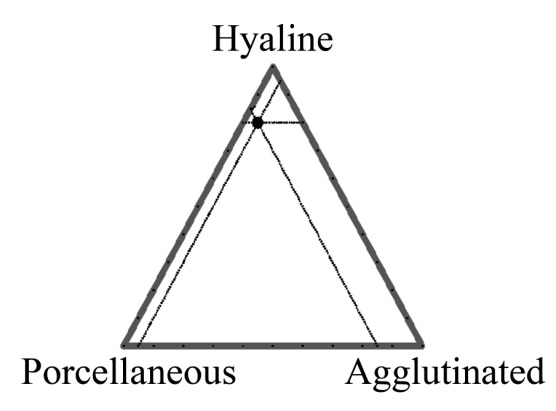
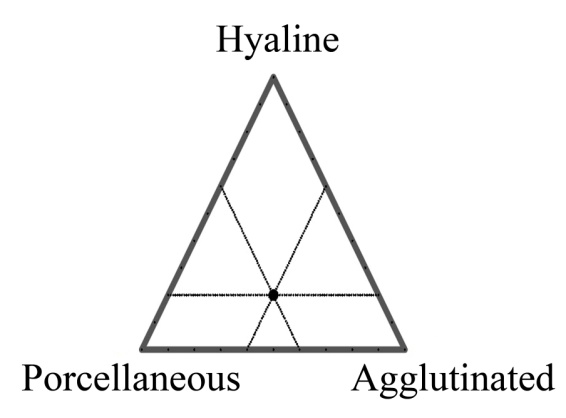
First Assemblage Second Assemblage
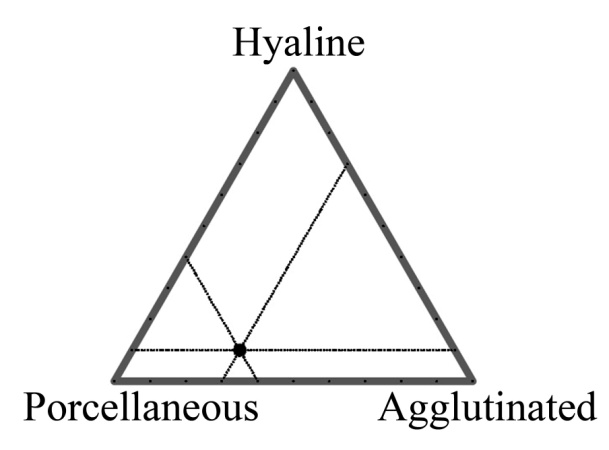
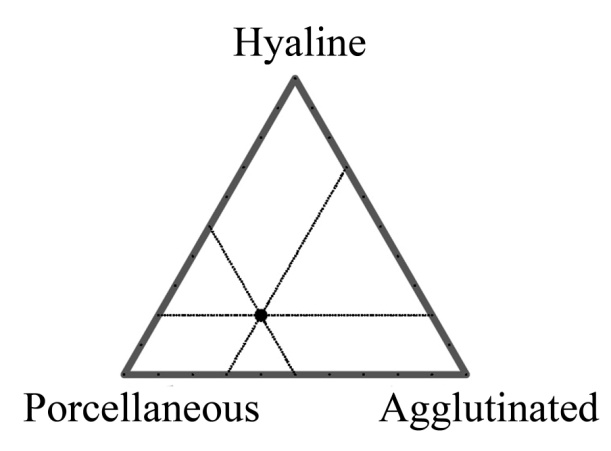
Third Assemblage Forth Assemblage
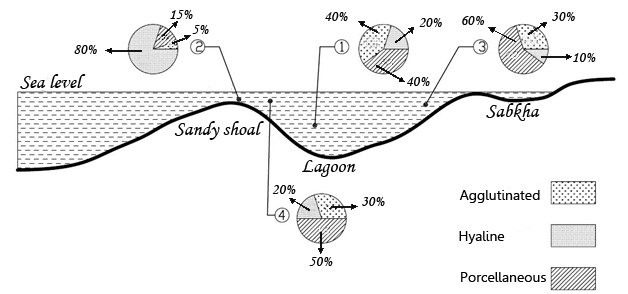
Fig. Paleoenvironment and locality of Foraminifera assemblage
References:
Akhtar M.&A.A.Butt.1999,Microfacies and foraminiferal assemblages from the Early Tertiary rocks of the cala Chita Range (Northern Pakistan). Geologie Mediterranneene,26(3-4):185-201.
Alavi,M,1991:Sedimentary and structural characteristics of the paleo-Tethys remnants in northeastern Iran.Geol.Soc.Of Amer.Bull.V.103,pp.983-992.
Babazadeh,S.A.2003,Biostratigraphyie et controles paleogeographiques de la zone de suture de IIran oriental. Implications sur la fermeture Tethysienne.These de doctorat,Universite d’Orleans,France,384p.
Babazadeh,S.A.2004 ,Litho – biostratigraphy of Paleogene sedimentary succesion in Sahlabad province (South Birjand) and evolution on Neo – Tethyan basin closure. Scientific project,No.08/1896,1-45.
Babazadeh,S.A.2008,Lower Eocene transgressive successions of Sahlabad province, eastern Iran, implication of biostratigraphy and microfacies analysis, Revue de Paleobiologie, Geneve,27(2):1-11
Beavington-Penney,S.J.and A.Racey,2004,Ecology of extant Nummulitids and other larger benthic foraminifera application in Palaeonvironmental analysis:earth science,v.67,p.219-265.
Berberian,M,et al,1983:The southern Caspian,a compressional depresson floored by a trapped,modifisd volcanologique,40(2),pp.121-123.
Brasier,M.D.,1975d,an outline history of seagrass comunities.paleontology 18,681-702.
Cosovic,v.k.Drobne,and A.Moro,2004,Palaeoenvironmental model for Eocene foraminiferal limestone of the Adriatic carbonate platform(Island peninsula):facies,no.50,p.61-75.
Flugel,E.,2004,Microfacies of carbonate
Loeblich,A.R.and H. Tappan,1998,Foraminiferal genera and their classification:van Nostrand Reinhold Company,New York,970p.
Pomar,L.2001b,Types of carbonate platforms:a genetic approach:Basin Res.,v.13,p.313-334.
Romero,J.,E.Caus & J.Rosell.2002,A model for the palaeoenvironmental distribution of larger foraminifera based on late Middle Eocene deposits on the margin of the South Pyrenean basin(NE spain).Palaeogeography.Palaeoclimatology,Palaeoecology,179:43-56.
Romero,J.,E.Caus & J.Rosell,2004,Ecology of extant nummulitids and other larger benthic foraminifera: applications in palaeoenvironmental analysis,Earth-Science Reviews 67,p.219-265.
Schlager, W. (1992). Sedimentology and sequence stratigraphy of reefs and carbonate
